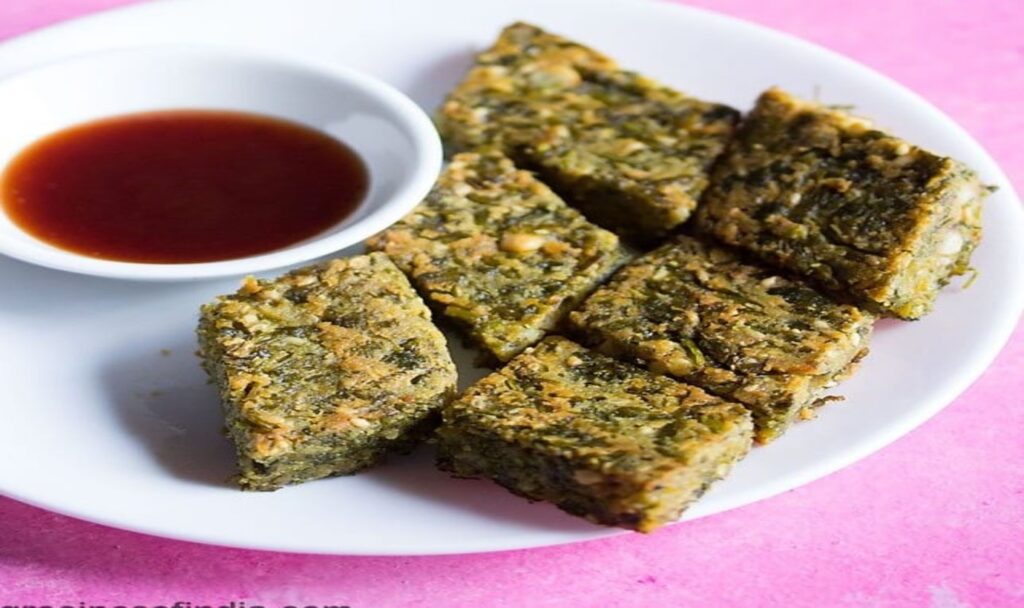Introduction:
In the vast tapestry of Indian cuisine, each region boasts its unique flavors and traditional recipes that tantalize taste buds with a burst of culinary delight. Among the diverse array of regional delicacies, Maharashtra, with its rich heritage, offers an array of mouthwatering dishes. One such flavorful gem is Kothimbir Vadi, a delectable Maharashtrian snack that blends the freshness of coriander leaves with an irresistible crispy texture. A popular tea-time treat and a favorite at festive gatherings, Kothimbir Vadi, with its aromatic flavors and appetizing appearance, has captured the hearts and palates of food enthusiasts far and wide.
The Roots of Kothimbir Vadi:
Kothimbir, the Marathi word for coriander leaves, is the star ingredient that lends its name and essence to this delightful preparation. Originating from the heartland of Maharashtra, Kothimbir Vadi is a treasured recipe that reflects the vibrant culture and culinary heritage of the region. Passed down through generations, the recipe has evolved to incorporate various twists and variations, but the essence of coriander remains at its core.
The Recipe Unfolded:
Kothimbir Vadi is relatively simple to prepare, with readily available ingredients that create a harmonious blend of flavors. The traditional recipe typically involves the following steps:
Gathering the Ingredients: The primary components include fresh coriander leaves, besan (gram flour), rice flour, sesame seeds, cumin seeds, turmeric, red chili powder, asafoetida, ginger-garlic paste, and a pinch of baking soda.
Preparing the Batter: A thick batter is created by combining the besan, rice flour, turmeric, red chili powder, asafoetida, sesame seeds, cumin seeds, ginger-garlic paste, and salt. Water is added gradually to achieve a smooth consistency.
Infusing with Coriander: The star of the dish, the coriander leaves, is finely chopped and incorporated into the batter, infusing it with its distinctive aroma and flavor.
Steaming or Frying: The batter is then either steamed or shallow-fried until it solidifies into a firm, golden-brown block. Steaming results in a softer, spongy texture, while frying yields a crispy exterior.
Tempering for Added Flavor: In the final step, the vadi is cut into squares and garnished with a traditional tadka (tempering) of mustard seeds, curry leaves, and asafoetida in hot oil.
The Art of Savoring:
The Kothimbir Vadi is best enjoyed fresh and hot, accompanied by a cup of masala chai. The contrast between the vibrant green coriander and the golden-brown crust makes it visually appealing, while the symphony of flavors on the palate leaves one craving for more. The earthy aroma of coriander, the spiciness of chilies, and the crunch of sesame seeds create a harmonious blend that delights all the senses.
Conclusion:
In the realm of Maharashtrian cuisine, Kothimbir Vadi stands tall as a delectable and appetizing delicacy. With its rich flavors, easy preparation, and visual allure, it has rightfully earned its place as a beloved snack across India and beyond. Whether it’s a quick snack to appease sudden cravings or a delightful addition to a festive spread, Kothimbir Vadi continues to captivate the hearts and palates of food enthusiasts, proudly representing the culinary heritage of Maharashtra. So, why not embark on a culinary adventure and savor the delightful blend of flavors in this traditional Maharashtrian treat – Kothimbir Vadi!
